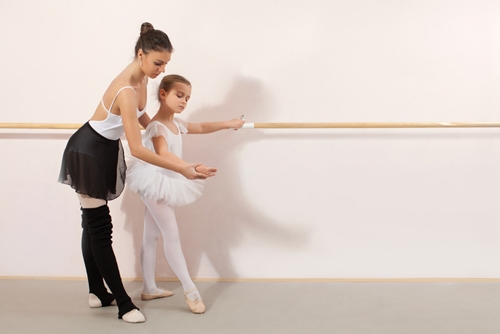There’s nothing quite like that moment when students finally master a new skill and you can see the excitement and pride in their eyes, knowing that you helped them reach this incredible achievement. You know all too well, however, that these moments don’t just come out of thin air. They require a lot of work from both you and your students to inspire them to be their best and to make measurable improvements following dance critique.
While some dancers will have a natural knack for picking up new moves, others will require much more coaching and critique to get them where they need to be. Providing the feedback is only a small part of instructing dancers. You need to help them apply dance critique so they can modify their movements. Otherwise, they’ll just become discouraged at receiving constant feedback without knowing how to actually implement the changes you’re expecting from them.
Providing Constructive Criticism
The first step in getting a student to apply dance critique is to deliver your feedback in a constructive way. This is especially the case for young dancers who may not be used to these opportunities for improvement. If feedback is framed in a negative way, dancers can end up too discouraged to keep trying. They’ll think there’s no point in working at it because they just aren’t any good, which is definitely not the mindset you’re trying to foster.
The dance blog Boundless recommended that constructive criticism should be specific, objective and concise. Approach the student positively and don’t belabor the point. If you act too apologetic or over explain, it may signal to the dancer that what’s being said is a negative thing. If you’re practical and to the point you can provide feedback without a dancer even feeling criticized.
It’s also important that you offer guidance for how to improve. Telling a student what she’s doing wrong won’t do her any good if she’s not sure what changes need to be made to make it right. Likewise, vague feedback that just tells her something isn’t working doesn’t let her know which area he or she needs to focus on. Is it foot positioning, or is the problem starting in the hips? A student needs to know where the mistakes are to then make adjustments. Changes are that if a student already knew what wasn’t going right, he or she wouldn’t be doing it.
One way to make a student more receptive to dance critique is to lead with a genuine compliment. If she’s starting a routine well, point out how strong her introduction is. Follow up by telling her it could be even stronger if she does x, y, z in specific areas of improvement. If a student has been struggling with a certain move but has been slowly improving, tell her that she’s gotten much better and that you think she can go even further.
Learning Centered Teaching suggested that instructors focus on the future and not the past. Don’t dwell on what has be going wrong. Direct your conversation to what can be done to get even better going forward.
Motivating Students to Take Action
While giving feedback correctly will be enough for many students to start making adjustments, others will need an extra push. You could be the very best there is at providing constructive criticism, but some students still won’t be able to apply what you’re telling them.
If you have a student who just can’t seem to make the changes you’re asking for, you may want to discreetly pull them aside for a more direct conversation. Don’t assume you know what the problem is. Go into the conversation with an open mind and remember that your goal is to help the student improve, not to chastise her for imperfection.
For students who don’t understand: Dance Advantage reported that instructors should try to ask students questions to help find the source of their difficulties. Ask her if she feels like she needs help with anything specific and see if she’s aware of what’s not quite working. You can then ask more pointed questions specific to the issue at hand. Does she feel any pain when she tries the move? Is she confused about any part of a routine? Inquiries along those lines can help you uncover the source of the problem so you can give more specific feedback.
For students who resist feedback: You may run into students who are just not receptive to any kind of criticism, however. These students will insist they are doing everything correctly. They may even get so combative that they tell you that you are the one who’s wrong!
Try not to take this personally. Chances are good that these students have a hard time feeling vulnerable. They may have high expectations for themselves, or low self esteem. Be understanding and try to relate to them with your own early dance experiences. Say it’s easy and understandable to feel it’s going perfectly because they can’t see it from the outside, but that you think there’s room to be even better. Don’t frame feedback as a lecture on what they’re doing wrong, but rather present it as an opportunity to get even better.
The most important thing for you to do is go into every dance critique interaction with good intentions and the goal of helping students improve. With that mindset, you’ll be much more effective in helping them grow.



